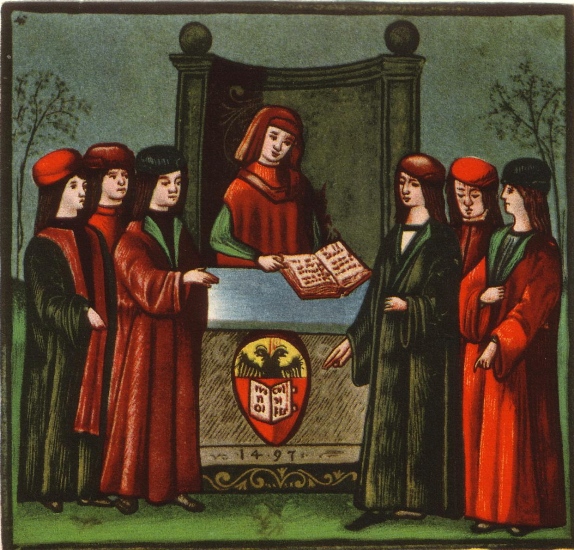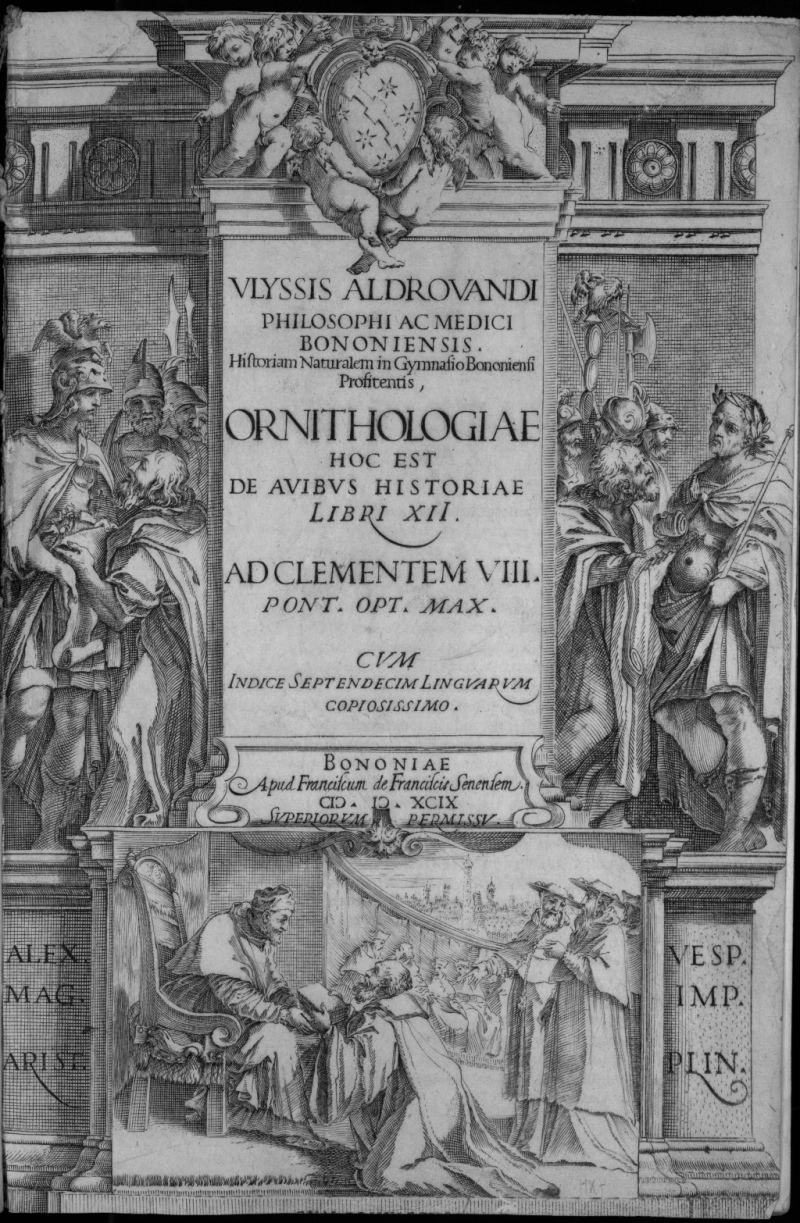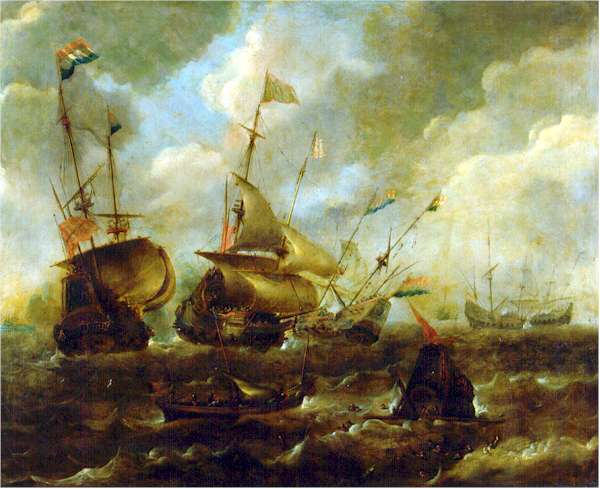|
Camillo Baldi
Camillo Baldi (1550 – 24 March 1637), also known as Camillus Baldus and Camillo Baldo, was an Italian philosopher. Life He was born into a family of minor Bolognese nobility. In 1572 he graduated in Philosophy and Medicine (what would now be called Natural Sciences). His father Pietro Maria Baldi was a lecturer at the University of Bologna and Camillo followed in his footsteps teaching there for sixty years. He started teaching in 1576, teaching Aristotelian logic until 1579 when he was promoted to a junior lectureship in philosophy which he held till 1586. From 1586 to 1590 he held the post of 'Protologicus'. This was a position that seems to have been created specifically for Baldi and little is known about what it involved. He was then made a senior lecturer in Philosophy from 1590 till his death in 1637. In this role he would have lectured on six works of natural philosophy by Aristotle, one per year in a six-year cycle. In his sixty-year career at the University Baldi ... [...More Info...] [...Related Items...] OR: [Wikipedia] [Google] [Baidu] |
Archiginnasio Of Bologna
The Archiginnasio of Bologna is one of the most important buildings in the city of Bologna; once the main building of the University of Bologna, it currently houses the Archiginnasio Municipal Library and the Anatomical Theatre. In the heart of the palace is the university Chapel of Santa Maria dei Bulgari, a reflection of history. History The construction of the Archiginnasio dates back to the 16th century, when Piazza Maggiore was drastically remodeled under papal orders; the Fountain of Neptune was built during this same period. The construction of the Archiginnasio was commissioned by Pope Pius IV through the papal legate Charles Borromeo and the vice-legate Pier Donato Cesi during the years of the Council of Trent, who then entrusted the project to Antonio Morandi (known as ''il Terribilia''). The building was begun at the end of February 1562, built very quickly, it was inaugurated on October 21, 1563. The goal of this project was to create a single place where the Scho ... [...More Info...] [...Related Items...] OR: [Wikipedia] [Google] [Baidu] |
Bologna
Bologna (, , ; egl, label= Emilian, Bulåggna ; lat, Bononia) is the capital and largest city of the Emilia-Romagna region in Northern Italy. It is the seventh most populous city in Italy with about 400,000 inhabitants and 150 different nationalities. Its metropolitan area is home to more than 1,000,000 people. It is known as the Fat City for its rich cuisine, and the Red City for its Spanish-style red tiled rooftops and, more recently, its leftist politics. It is also called the Learned City because it is home to the oldest university in the world. Originally Etruscan, the city has been an important urban center for centuries, first under the Etruscans (who called it ''Felsina''), then under the Celts as ''Bona'', later under the Romans (''Bonōnia''), then again in the Middle Ages, as a free municipality and later ''signoria'', when it was among the largest European cities by population. Famous for its towers, churches and lengthy porticoes, Bologna has a well-preserved ... [...More Info...] [...Related Items...] OR: [Wikipedia] [Google] [Baidu] |
Dizionario Biografico Degli Italiani
The ''Dizionario Biografico degli Italiani'' ( en, Biographical Dictionary of the Italians) is a biographical dictionary published by the Istituto dell'Enciclopedia Italiana, started in 1925 and completed in 2020. It includes about 40,000 biographies of distinguished Italians. The entries are signed by their authors and provide a rich bibliography. History The work was conceived in 1925, to follow the model of similar works such as the German ''Allgemeine Deutsche Biographie'' (1912, 56 volumes) or the British '' Dictionary of National Biography'' (from 2004 the ''Oxford Dictionary of National Biography''; 60 volumes). It is planned to include biographical entries on Italians who deserve to be preserved in history and who lived at any time during the long period from the fall of the Western Roman Empire to the present. As director of the Treccani, Giovanni Gentile entrusted the task of coordinating the work of drafting to Fortunato Pintor, who was soon joined by Arsenio Frugoni ... [...More Info...] [...Related Items...] OR: [Wikipedia] [Google] [Baidu] |
Istituto Dell'Enciclopedia Italiana
The ''Enciclopedia Italiana di Scienze, Lettere e Arti'' (Italian for "Italian Encyclopedia of Science, Letters, and Arts"), best known as ''Treccani'' for its developer Giovanni Treccani or ''Enciclopedia Italiana'', is an Italian-language encyclopaedia. The publication ''Encyclopaedias: Their History Throughout The Ages'' regards it as one of the greatest encyclopaedias along with the ''Encyclopædia Britannica'' and others. History The first edition was published serially between 1929 and 1936. In all, 35 volumes were published, plus one index volume. The set contained 60,000 articles and 50 million words. Each volume is approximately 1,015 pages, and 37 supplementary volumes were published between 1938 and 2015. The director was Giovanni Gentile and redactor-in-chief . Most of the articles are signed with the initials of the author. An essay credited to Benito Mussolini entitled "The Doctrine of Fascism" was included in the 1932 edition of the encyclopedia, although it wa ... [...More Info...] [...Related Items...] OR: [Wikipedia] [Google] [Baidu] |
University Of Bologna
The University of Bologna ( it, Alma Mater Studiorum – Università di Bologna, UNIBO) is a public research university in Bologna, Italy. Founded in 1088 by an organised guild of students (''studiorum''), it is the oldest university in continuous operation in the world, and the first degree-awarding institution of higher learning. At its foundation, the word ''universitas'' was first coined.Hunt Janin: "The university in medieval life, 1179–1499", McFarland, 2008, , p. 55f.de Ridder-Symoens, Hilde''A History of the University in Europe: Volume 1, Universities in the Middle Ages'' Cambridge University Press, 1992, , pp. 47–55 With over 90,000 students, it is the second largest university in Italy after La Sapienza in Rome. It was the first place of study to use the term ''universitas'' for the corporations of students and masters, which came to define the institution (especially its law school) located in Bologna. The university's emblem carries the motto, ''Alma Mater Studio ... [...More Info...] [...Related Items...] OR: [Wikipedia] [Google] [Baidu] |
Ulisse Aldrovandi
Ulisse Aldrovandi (11 September 1522 – 4 May 1605) was an Italian naturalist, the moving force behind Bologna's botanical garden, one of the first in Europe. Carl Linnaeus and the comte de Buffon reckoned him the father of natural history studies. He is usually referred to, especially in older scientific literature in Latin, as Aldrovandus; his name in Italian is equally given as Aldroandi. Life Aldrovandi was born in Bologna to Teseo Aldrovandi and his wife, a noble but poor family. His father was a lawyer, and Secretary to the Senate of Bologna, but died when Ulisse was seven years old. His widowed mother wanted him to become a jurist. Initially he was sent to apprentice with merchants as a scribe for a short time when he was 14 years old, but after studying mathematics, Latin, law, and philosophy, initially at the University of Bologna, and then at the University of Padua in 1545, he became a notary. His interests successively extended to philosophy and logic, which he c ... [...More Info...] [...Related Items...] OR: [Wikipedia] [Google] [Baidu] |
Alessandro Tassoni
Alessandro Tassoni (28 September 156525 April 1635) was an Italian poet and writer, from Modena, best known as the author of the mock-heroic poem ''La secchia rapita'' (''The Rape of the Pail'', or ''The stolen bucket''). Life He was born in Modena, to a noble family, from Bernardino Tassoni and Sigismonda Pellicciari. Having lost both parents at an early age, he was raised by the maternal grandfather, Giovanni Pellicciari. It was with Giovanni that, according to tradition, he first visited the bucket, which was later to inspire his major work, in the belfry of Modena's Cathedral. At the age of 13, Alessandro Tassoni was taught Greek and Latin by Lazzaro Labadini, a professor of Literature at the University. He then became a law student, attending university in Modena, then in Bologna, Pisa and Ferrara, where he eventually graduated. He appears to have been a rowdy youth, living for some time in Nonantola, from where he was expelled in 1595, due to several incidents in which ... [...More Info...] [...Related Items...] OR: [Wikipedia] [Google] [Baidu] |
Graphology
Graphology is the analysis of handwriting with attempt to determine someone's personality traits. No scientific evidence exists to support graphology, and it is generally considered a pseudoscience or scientifically questionable practice. However, it remains in widespread use in France and has historically been considered legitimate for use in some court cases. The term is sometimes incorrectly used to refer to forensic document examination, due to the fact that aspects of the latter dealing with the examination of handwritten documents are occasionally referred to as '' graphanalysis''. Historian Laurens Schlicht states that while graphology failed to become a scientific discipline, many experts in experimental psychology and psychiatry participated in the endeavour to study graphology within a broader, more recognized science of expression, and that "to qualify something as pseudoscience can thus easily result in an unsystematic examination of a historical constellation of k ... [...More Info...] [...Related Items...] OR: [Wikipedia] [Google] [Baidu] |
Latin
Latin (, or , ) is a classical language belonging to the Italic branch of the Indo-European languages. Latin was originally a dialect spoken in the lower Tiber area (then known as Latium) around present-day Rome, but through the power of the Roman Republic it became the dominant language in the Italian region and subsequently throughout the Roman Empire. Even after the fall of Western Rome, Latin remained the common language of international communication, science, scholarship and academia in Europe until well into the 18th century, when other regional vernaculars (including its own descendants, the Romance languages) supplanted it in common academic and political usage, and it eventually became a dead language in the modern linguistic definition. Latin is a highly inflected language, with three distinct genders (masculine, feminine, and neuter), six or seven noun cases (nominative, accusative, genitive, dative, ablative, and vocative), five declensions, four verb conjuga ... [...More Info...] [...Related Items...] OR: [Wikipedia] [Google] [Baidu] |
Demetrius Phalereus
Demetrius of Phalerum (also Demetrius of Phaleron or Demetrius Phalereus; grc-gre, Δημήτριος ὁ Φαληρεύς; c. 350 – c. 280 BC) was an Athenian orator originally from Phalerum, an ancient port of Athens. A student of Theophrastus, and perhaps of Aristotle, he was one of the first members of the Peripatetic school of philosophy. Demetrius had been a distinguished statesman who was appointed by Cassander, the King of Macedon, to govern Athens, where Demetrius ruled as sole ruler for ten years. During this time, he introduced important reforms of the legal system, while also maintaining pro-Cassander oligarchic rule. Demetrius was exiled by his enemies in 307 BC. He first went to Thebes, and then, after 297 BC, went to the court of Alexandria. He wrote extensively on the subjects of history, rhetoric, and literary criticism. He is not to be confused with his grandson, also called Demetrius of Phaleron, who probably served as regent of Athens between 262 and 255, ... [...More Info...] [...Related Items...] OR: [Wikipedia] [Google] [Baidu] |
Graphologists
Graphology is the analysis of handwriting with attempt to determine someone's personality traits. No scientific evidence exists to support graphology, and it is generally considered a pseudoscience or scientifically questionable practice. However, it remains in widespread use in France and has historically been considered legitimate for use in some court cases. The term is sometimes incorrectly used to refer to forensic document examination, due to the fact that aspects of the latter dealing with the examination of handwritten documents are occasionally referred to as '' graphanalysis''. Historian Laurens Schlicht states that while graphology failed to become a scientific discipline, many experts in experimental psychology and psychiatry participated in the endeavour to study graphology within a broader, more recognized science of expression, and that "to qualify something as pseudoscience can thus easily result in an unsystematic examination of a historical constellation of ... [...More Info...] [...Related Items...] OR: [Wikipedia] [Google] [Baidu] |
1637 Deaths
Events January–March * January 5 – Pierre Corneille's tragicomedy ''Le Cid'' is first performed, in Paris, France. * January 16 – The siege of Nagpur ends in what is now the Maharashtra state of India, as Kok Shah, the King of Deogarh, surrenders his kingdom to the Mughal Empire. * January 23 – John Maurice, Prince of Nassau-Siegen arrives from the Netherlands to become the Governor of Dutch Brazil, and extends the range of the colony over the next six years. * January 28 – The Manchu armies of China complete their invasion of northern Korea with the surrender of King Injo of the Joseon Kingdom. * February 3 – Tulip mania collapses in the Dutch Republic. * February 15 – Ferdinand III becomes Holy Roman Emperor upon the death of his father, Ferdinand II, although his formal coronation does not take place until later in the year. * February 18 – Eighty Years' War – Battle off Lizard Point: Off the coast of Co ... [...More Info...] [...Related Items...] OR: [Wikipedia] [Google] [Baidu] |




